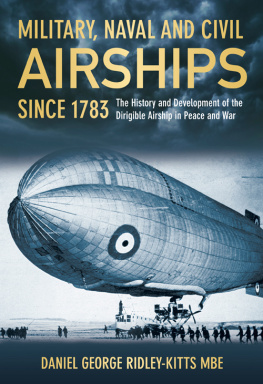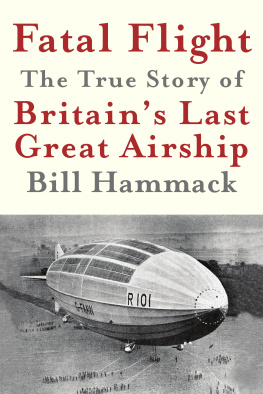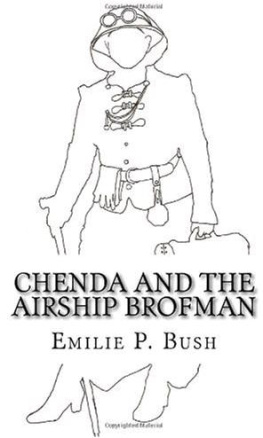
To all the National Servicemen who served in Germany 1956 to 1958 during the Cold War.
RAF Celle, Sylt, Ahlhorn
Boys doing a mans job
I first became interested in the history and development of airships in the mid-1950s, when, as a young national serviceman, I was posted to RAF Ahlhorn in Lower Saxony, Germany.
I soon learnt that that this air station had been the headquarters of the Imperial German Naval Airship Service in the First World War. In the evening, after servicing the de Havilland Venom fighters of our squadron, we would visit the local bars in the village where pictures of naval airships adorned the walls. Here we learnt something of the activities that had taken place on the flugplatz (airfield) during the Great War from a couple of old boys who had worked on the base at the time.
Out on the field there were still the outline traces of the massive sheds that had existed there long ago, and I discovered that my own billet had in fact been the headquarters building used by the redoubtable Fregattenkapitn Peter Strasser leader of naval airships throughout the war period until his death aboard the L70 , in the last raid on the British Isles in August 1918, off the Norfolk coast.
So my first acknowledgement must go to the two old German gentlemen who first fired my interest in the subject of airships.
Over the intervening years as I put the book together, I have had help and encouragement from various friends, including my long-suffering wife, Christine, who very sensibly has never read a page of my writings but has patiently encouraged me to get it printed.
More recently, as the book approached completion, various people have assisted me in a number of different ways. I am indebted to my neighbour, Kapil Joshi, who has come to my aid in solving problems with my computer that arose from time to time, and to Peter Lindsley of CBM Publishing Services, Cromer, who expertly reproduced the line drawings contained within the text.
I am also grateful to the Airship Heritage Trust of Cardington, Bedfordshire, who have kindly allowed me access to their photographic archive for the photos used in the book, with special mention being made to Dr Edwin Mowforth and Derek Millis for their assistance and encouragement.
Finally, I should like to mention my commissioning editor at The History Press, Jay Slater, who commissioned the book on the evidence of the single chapter I first submitted for consideration; I thank him for his confidence in the book.
Contents
|
|
|
|
|
|
|
|
|
|
|
|
|
|
|
|
|
|
|
|
Appendix 1 |
Appendix 2 |
Appendix 3 |
Appendix 4 |
The Conquest of the Air
T he dream of human flight is a recurring image in the history of mankind, with mans earliest attempts to fly based, not unnaturally, on an imitation of bird flight. The history of manned flight from Icarus onward is littered with mad tower jumpers launching themselves into the void, with flapping wings strapped to their backs. Later came the more reasoned and considered works of Leonardo da Vinci, and other early pioneers, who struggled to understand the secrets of flying with all their essays based on the principle of heavier-than-air flight.
There is no obvious parallel in nature that corresponds to the lighter-than-air principle that airships rely on to float in the air, but the monk and natural philosopher Roger Bacon (121494) speculated that the atmosphere above the earth possessed an upper surface on which an aerial vessel could be made to float on this sea of air. In his work Secrets of Art and Nature , written in 1250, he describes such a craft as being: a large hollow globe fashioned from copper, wrought very thin in order to save weight, and to be filled with Ethereal air or Liquid fire, then to be launched from an elevated point into the atmosphere, where it will float as a boat on water.
Francisco de Mendoza (d. 1626) also considered the employment of what he termed elementary fire to maintain such a vessel in the air, where it could be propelled by oars. Better known are the writings of Francesco de Lana (163187), who proposed a flying boat that would float in the atmosphere by virtue of four large copper globes from which the air had been evacuated; the resulting displacement of air being sufficient to provide the necessary lift.
De Lana had in fact conducted experiments to determine the weight of air, the results of which despite the primitive apparatus at his disposal were very close to the modern accepted measurements. Unfortunately, the scheme was completely impractical, as de Lana had failed to appreciate that the atmospheric pressure acting on the evacuated globes, which he thought would help to consolidate the spheres, would in fact crush them flat. De Lana did, however, foresee the use of flying machines in warfare, with the bombing of fortresses and ships at sea by the dropping of fire balls and the rapid transportation of troops, together with describing their employment for commerce.
The invention of the hot air balloon is generally ascribed to the Montgolfier brothers in 1783, with the first manned flight made by Piltre de Rozier on 15 October of that year, in Paris. This event was followed, in December 1783, by the first manned ascent of a hydrogen balloon under the direction of the physicist J.A.C. Charles, which was to become the more practical and convenient form of craft for the purpose of aerial navigation. Indeed, the superiority of the hydrogen balloon was quickly established over its hot air competitor in terms of convenience of operation and its ability to conduct flights of greater duration.
The rapid pace of the development of the hot air and the hydrogen balloon following the Montgolfiers first flight was extraordinary: within just over a year Blanchard and Jeffries had completed the first crossing of the English Channel, and ascents were being made in London and other European capitals during this period.
Throughout the nineteenth century, as intrepid balloonists became ever more familiar with the ocean of the air, undertaking long voyages and making high-altitude ascents to study the composition of the upper atmosphere, they were still at the mercy of the winds that determined the direction of travel. The question of effective control, together with a method of propulsion, exercised the mind of the early aeronauts, and various wildly impractical schemes were suggested, including the use of oars and sails, or even being towed by trained birds.
The first scientifically based solution for controlled dirigible flight was put forward only days after the first ascent of the hydrogen balloon in 1783, when the brilliant French army officer and savant, Jean Baptiste Meusnier, proposed the design of an elongated ellipsoidal balloon. Driven through the air by three propellers and operated by manual power, this was the first application of the airscrew in aviation. Although it was not built, Meusniers design incorporated almost all the features to be found in modern airships.
In 1852 Henri Giffard built a steam-powered dirigible with which he was able to achieve a degree of control, although he was unable to navigate a circular course and return to his starting place. Twenty years on, in 1872, Austrian Paul Haenlein flew an airship propelled by a Lenoir gas engine, the fuel for which was supplied from the airships envelope, again with some success.
Next page








